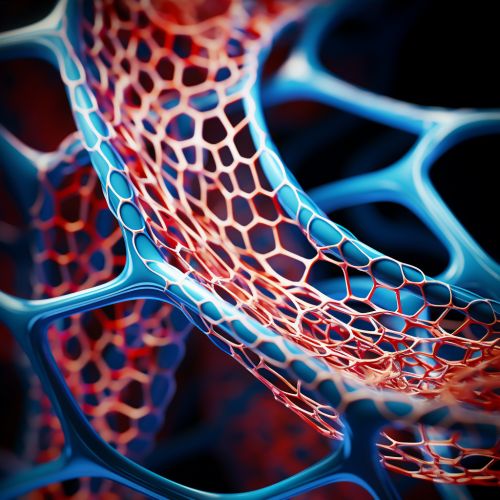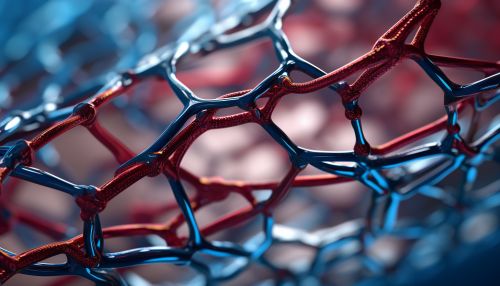Flagellin
Overview
Flagellin is a globular protein that arranges itself in a hollow cylinder to form the filament in a bacterial flagellum. It is the primary component of the bacterial flagellum, and is present in incredibly large amounts in flagellated bacteria.
Structure
Flagellin is a protein of about 30-60 kDa, depending on the source organism. The protein is made up of a series of domains that are responsible for its various functions. The N- and C-terminal domains are highly conserved and form the core of the protein, while the central domain is highly variable and is responsible for antigenic variation.


Function
The primary function of flagellin is to form the filament of the bacterial flagellum. This filament acts as a propeller, enabling the bacterium to move towards or away from stimuli in a process known as chemotaxis. Flagellin can also act as a potent activator of the innate immune system in plants and animals.
Immune Response
Flagellin is recognized by the innate immune system as a sign of bacterial infection. In animals, flagellin is detected by Toll-like receptor 5 (TLR5) and activates an inflammatory response. In plants, flagellin is recognized by a number of receptor-like kinases and triggers a variety of defense responses.
Role in Bacterial Motility
Flagellin plays a crucial role in bacterial motility. The flagellum, composed primarily of flagellin, is a complex rotary motor that enables bacteria to move towards favorable environments and away from unfavorable ones. This movement, known as chemotaxis, is vital for the survival and proliferation of bacteria.
Antigenic Variation
Due to the variable central domain of flagellin, different strains of bacteria can produce flagellins that are antigenically distinct. This antigenic variation allows bacteria to evade the immune response, as the immune system must recognize and respond to each new variant of flagellin.
